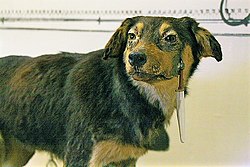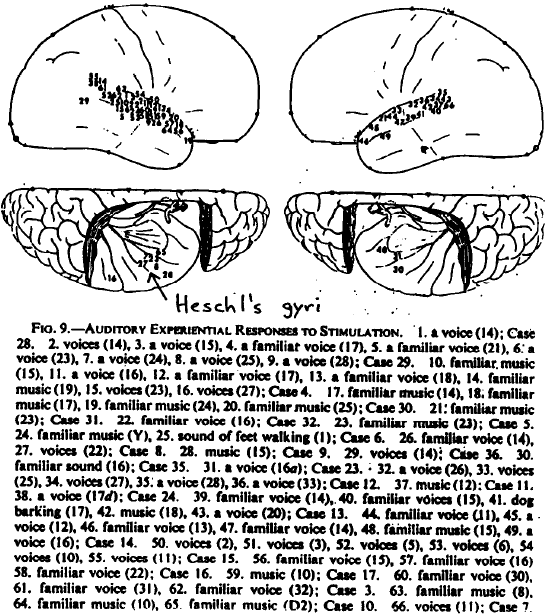Gastric juices, glass slides, and familiar voices
Trivia from three experiments…
 Pavlov did all his dog experiments initially with the goal of collecting their gastric juices to study digestion. He only changed his research to conditioning after he realized the dogs tended to salivate before they even had the food. There is a picture of Pavlov’s taxidermied dog (left) on the Wikipedia page, and here is a little browser someone at Cold Spring Harbor is inspired enough to maintain, on all of Pavlov’s dogs.
Pavlov did all his dog experiments initially with the goal of collecting their gastric juices to study digestion. He only changed his research to conditioning after he realized the dogs tended to salivate before they even had the food. There is a picture of Pavlov’s taxidermied dog (left) on the Wikipedia page, and here is a little browser someone at Cold Spring Harbor is inspired enough to maintain, on all of Pavlov’s dogs.
Hubel and Wiesel accidentally stumbled onto the start of their Nobel-prize winning discovery on the visual cortex in cats, by getting a slide stuck at an angle while loading it to view in the projector. The edge of the glass slide created a sharply contrasting line at an angle that triggered activity in the cat brains.
After unjamming the slide, they slowly pushed it into its slot. Suddenly the electrode monitor started firing like “a machine gun.â€
(from http://www.nytimes.com/books/first/h/horgan-mind.html?_r=1&oref=slogin)
 Wilder Penfield electrically stimulated epileptic patients’ brains in an attempt to map the human cortex. He found that stimulation in the superior temporal lobe could give the patient a sensation of familiar voices, music, and memories. I find the accompanying picture ((from Penfield and Perot, 1963)) very amusing. (“sound of feet walking”??)
Wilder Penfield electrically stimulated epileptic patients’ brains in an attempt to map the human cortex. He found that stimulation in the superior temporal lobe could give the patient a sensation of familiar voices, music, and memories. I find the accompanying picture ((from Penfield and Perot, 1963)) very amusing. (“sound of feet walking”??)
No Comments
Be the first to comment!